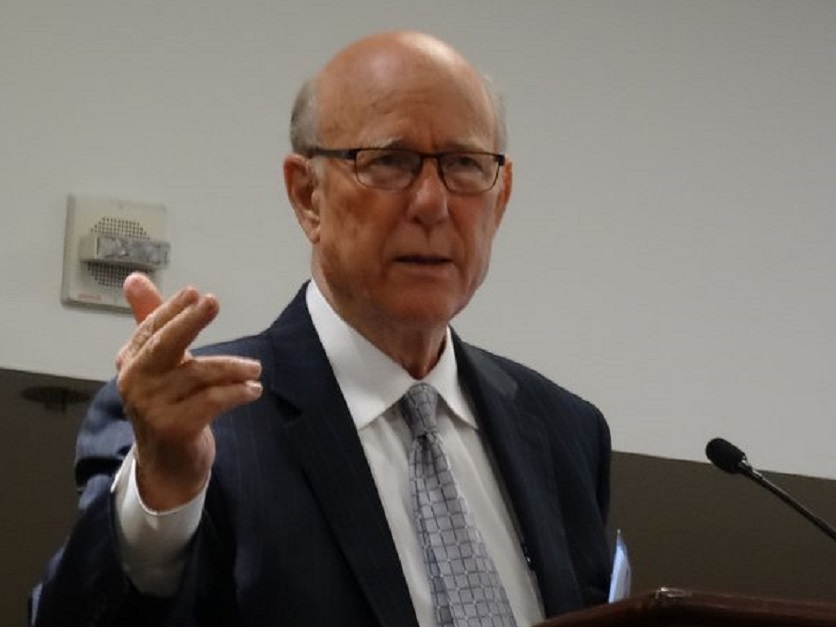WASHINGTON, Feb. 23, 2017 - The Senate Agriculture Committee launched its hearings on the new farm bill, hearing from farmers in Kansas who appealed for changes to some commodity programs, new support for cotton growers and continued funding for conservation.
The farmers also expressed opposition to means testing or other restrictions on crop insurance and said that EPA restrictions on pesticides threatened to increase production costs.
Senate Agriculture Chairman Pat Roberts, R-Kan., said that a new farm bill will have to address “all regions and all crops.”
“All of agriculture is struggling, not just one or two commodities,” he said.
Roberts and ranking member Debbie Stabenow, D-Mich., held the hearing at Kansas State University in Manhattan. A second field hearing will be held in Stabenow’s home state.
The committee is going to take online comments on the farm bill through March 2 through a link on its web site.
Stabenow used the hearing to note that 37 smaller but “key” farm bill programs have no funding after the current farm bill expires in 2018. They include programs that support bioenergy, rural development and smaller-scale and organic agriculture.
The House Agriculture Committee will hold a series of subcommittee hearings starting next week and continuing into April. Chairman Mike Conaway said at USDA’s annual Agricultural Outlook Forum in Arlington, Va., earlier today that he didn’t expect to begin moving a farm bill until the fourth quarter of the year or early 2018. Conaway said he didn’t want to have his committee act on a bill until he knows there is time to debate it on the House floor.
All of the 18 witnesses at the Senate committee’s hearing were from Kansas, but in many cases they were speaking for national as well as state groups. Farmers in Kansas are struggling with similar price challenges as producers elsewhere.
The top 50 to 60 percent of producers are showing minor profitability or at least holding their own, said Gena Ott, a financial officer with Frontier Farm Credit in Emporia, but the bottom 15 to 20 percent face higher debt loads and higher costs of production.
Kenneth Wood, president of the Kansas Association of Wheat Growers, said that “low prices and rising costs are placing even more stress” on farmers. He said that crop insurance was the “most important segment” of the federal safety net. Restrictions on crop insurance that have been proposed by program critics would discourage participation and ”make crop insurance more expensive for all of us,” he said.
One proposal that critics are likely to press when the new farm bill is debated would reduce premium subsidies for higher income growers.
Other producers raised specific issues faced by growers of their commodities.
Tom Lahey, a cotton grower from Moscow, Kansas, told the senators that cotton should be made eligible for the Price Loss Coverage and Agriculture Revenue Coverage programs. Unlike other crops that can participate in those programs, cotton is “exposed to the full market impact,” said Lahey.
Cotton growers opted out of the commodity programs in 2014 in return for creation of a revenue insurance policy, called Stacked Income Protection Plan (STAX), but producers say there is little chance for them to get payments now that cotton prices have stabilized at a relatively low level.
Corn and soybean growers asked the senators to address disparities in ARC payments between counties. The farmers said the farm bill should require the Farm Service Agency to use the Risk Management Agency’s yield data when available for calculating ARC payments, rather than survey data from the National Agricultural Statistics Service.
“That would go a long way in leveling the playing field from county to county,” said Kent Moore, a farmer from Iuka who chairs the Kansas Corn Commission.
Lynda Foster, a dairy producer from Fort Scott, said changes that were made to the Margin Protection Program before it was enacted in 2014 reduced its benefit to farmers.
The National Milk Producers Federation prepared a formula for calculating average feed costs that was cut 10 percent in the final bill, she said. As a result, the margin between prices and feed costs appeared larger than it should have been.
From May through June 2016, USDA calculated the MPP margin at $5.76 per hundredweight, while the original feed formula would have put it at $4.77. That smaller margin calculation would have allowed “a much larger group of financially-stressed producers to benefit from MPP,” she said in her prepared testimony.
Like what you see here? Agri-Pulse subscribers get our Daily Harvest email and Daybreak audio Monday through Friday mornings, a 16-page newsletter on Wednesdays, and access to premium content on our ag and rural policy website. Sign up for your four-week free trial Agri-Pulse subscription.
Beef and pork producers who testified at the hearing opposed the interim final rule issued by the Grain Inspection and Packers and Stockyards Administration in December. The rule is intended to aid producers in challenging processor contracting and buying practices, but the Kansas producers said it would be an unnecessary interference in livestock markets.
Michael Springer, a pork producer from Independence, also said the farm bill needed to fund a vaccine bank for ensuring the U.S. industry could stop an outbreak of foot and mouth disease. “We need the capacity to produce enough vaccine to quickly control and eradicate the disease,” he said.
There was broad agreement among the producers on continued funding for conservation programs, including the Environmental Quality Incentives Program.
Cameron Peirce, a sunflower grower from Hutchinson, said EQIP funding encouraged no-till farming, which often uses that crop. EQIP should be maintained at current funding levels, he said.
(Corrects description of ARC change sought by corn and soybean growers.)
#30


